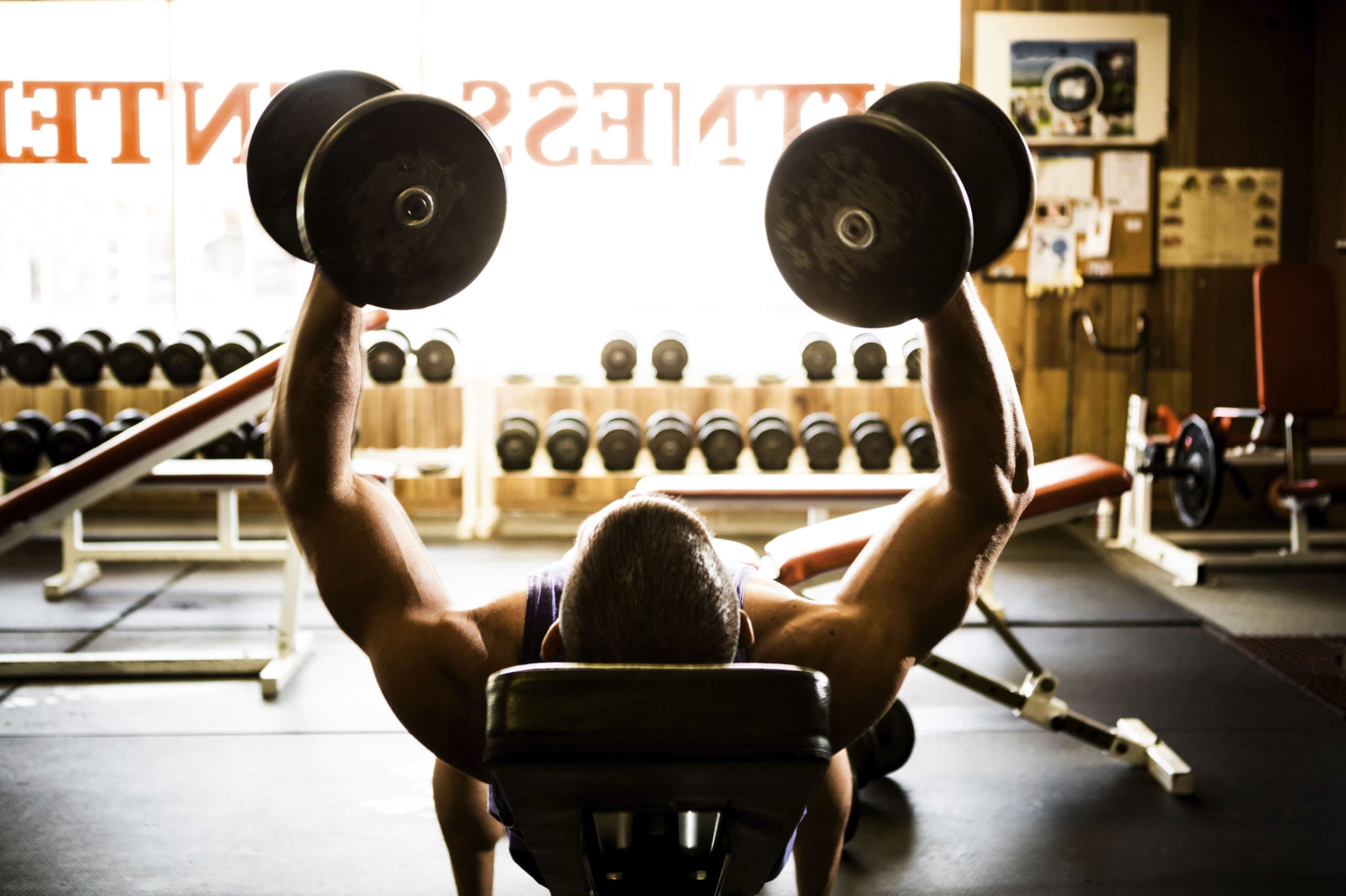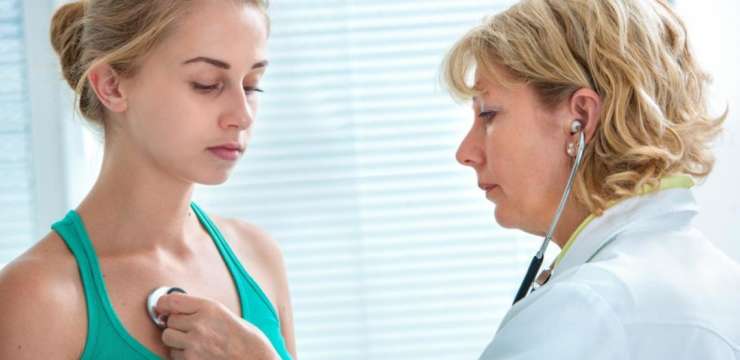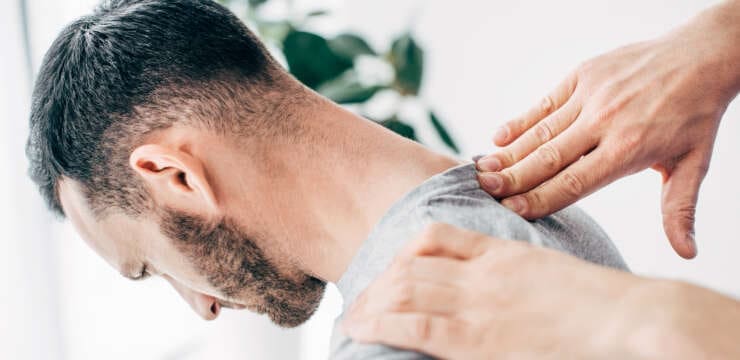
Table of Contents
Introduction
When the body is functioning properly, it is due to the hormones working on each organ and body system for individuals to achieve overall health and wellness. In males, the lead hormone is testosterone, and when hormones get off-balance it can cause problems to the male body. Hormones naturally decline due to age and chronic illnesses can also affect hormones causing individuals to be in pain and disrupting everyday activities. Part one explains what happens when there is low testosterone in a male body and part two explains what are the causes for low testosterone. Over the last decade, many of our patients asked complex and insightful questions about hormone replacement therapies. By referring patients to qualified and skilled providers who specialized in hormone wellness services, we advise our patients, appropriately, to refer to our associated medical providers based on their examination. We find that education is the key to asking valuable questions to our providers. Dr. Jimenez DC provides this information as an educational service only. Disclaimer
What Is Hormone Replacement Therapy?
In older males, hormones naturally decline due to age and the testosterone levels start to get off-balance when there is an overproduction from the adrenal glands. With hormone replacement therapy or HRT, it can help regulate and replenish testosterone levels in the body. Not only that but HRT can even help prolong the progress of prostate cancer and lower the overproduction of androgen hormones from the adrenal glands.
New Guidelines Presented at the American Academy of Anti-Aging.
Testosterone Replacement Therapy & Erectile Dysfunction
Erectile dysfunction is a common complaint that older males go through when they age. Testosterone replacement therapy or TRT shows promising potential by replenishing low testosterone levels and improving erectile dysfunction.
- Review of studies done on TRT and ED. (Rizk et al, 2017)
- The recently published Testosterone Trials – a set of RCTs of 790 men with late
onset hypogonadism randomly assigned to either testosterone gel or a placebo –
demonstrated that after 1 year of treatment that men who used testosterone gel
had an IIEF-ED score 2.64 points [95% Confidence Interval (CI): 1.06 – 4.02]
greater than men who had been assigned to the placebo arm - “The available literature supports a role for TRT in men with low testosterone
levels, ED, and low libido, with symptomatic improvement in these men.â€
TRT and Cognitive Function
Since testosterone correlated with cognitive function, TRT improves it. High free testosterone, was associated with better performance on tests from memory, executive function, and spatial ability. Not only that, TRT can reduce the risk for Alzheimer’s and improve cerebral blood flow.
- Androgen supplementation in elderly
hypogonadal men improve spatial cognition
and verbal fluency - In elderly men without dementia, it may reduce
working memory errors - Â Testosterone or DHT therapy in men aged 34 to
70 years improved verbal memory and spatial
memory respectively
Testosterone and Alzheimer’s
Alzheimer’s disease is a progressive neurological disorder that causes the brain to shrink and is one of the most common causes of dementia. Alzheimer’s can cause a person to decline their thinking, behavioral and social skills while also affecting their ability to function independently.
- TRT prevents the production of beta-amyloid precursor
protein in men
– Gouras GK et al. Testosterone reduces neuronal secretion of
Alzheimer’s beta-amyloid peptides. Proc Natl Acad Sci USA 2000 Feb
1;97(3):1202-5 - Alzheimer’s male patients TRT treated improved over 1 year;
control group deteriorated
– Tan RS A pilot study on the effects of testosterone in a hypogonadal aging male
patients with Alzheimer’s disease. Aging Male. 2003 Mar;6(1):13-7
Testosterone Replacement Therapy can have a beneficial impact on males which includes:
- Erectile Dysfunction
- Cognitive function in Alzheimer’s
- Bone Mass Density
- Body composition
- Metabolic parameters
- Maybe blood pressure
Testosterone and Inflammation
Testosterone therapy created a more anti-inflammatory profile by lowering fewer inflammatory cytokines like TNF and IL-1 beta. TRT can cause the body to produce more anti-inflammatory cytokines like IL-10 and even help lower total cholesterol.
- Inflammation plays a central pathogenic role in the
initiation and progression of coronary atheroma
and its clinical consequences. - Cytokines are the mediators of cellular
inflammation and promote local inflammation of
the arterial wall, which may lead to vascular
smooth muscle apoptosis, degradation of the fibrin
cap and plaque rupture
The Baseline Testing for Testosterone Deficiency
The guidelines recommend collecting an early-morning sample to compensate for the natural diurnal variation in testosterone levels. But for men 45 and older, this is unnecessary. About 2569 men at Minneapolis VA looked at testosterone levels based on age throughout the day. Only the youngest men (<45) had significant differences based on age and the different tests to detect testosterone deficiency include:
- Blood testing (serum)
– Total/free testosterone
– SHBG
– DHT
– DHEA
– Estradiol
– LH/FSH - 24-hour urine testing
- Saliva testing
- Blood spot testing
- Dried urine test
Methods of Testosterone Therapy
There are many methods of testosterone therapy for males that have low levels of testosterone. These include:
- Transdermal patch
- Topical Testosterone
- Injectable Testosterone
- Oral
- Pellets
- Clomiphene
- HGH
TRT: Transdermal Patches
Transdermal Testosterone Patches are available in 2-mg and 4 mg preparations and the typical starting dose is 4-mg/day; can increase to 8-mg or decrease to 2 -mg as needed. What you need to do is:
- Applied at night to a clean, dry area of skin on the back, stomach, upper arms, or thighs.
- Sites should be rotated daily, allowing 7 days before re-applying to the same site
- Side effects:
– Skin irritation, vesicle formation, contact dermatitis,
headache, and depression
TRT: Gel Formulations
Testosterone Gels are topical testosterone and can be applied in the morning to the shoulders, abdomen, or upper arm; preferably at the same location every day. What you need to do:
- Use gloves or wash hands after application- They will have hormone on hands for 4-12 hours
- Allow the gel to dry (10-15 min) before covering with clothing
- Wait 4 hours prior to showering or swimming
- Wash with soap and water if skin-to-skin contact with another person
anticipated
– Dosing: 1% or 1.62% generally available
– 5 grams (50 mg testosterone) daily, can be increased to 7.5 – 10 grams as needed or 40.5 mg of the 1.62%, can be increased in increments of 20.25mg - Side effects: acne, headaches, emotional lability, nervousness, gynecomastia, mastodynia, insomnia, hypertension, hot flashes, polycythemia, and increased PSA
– Local skin irritation occurs much less frequently than with patches
– Major issue is transference
– Substantial variation in absorption
Injectable Testosterone
Injectable testosterone esters in oil are slowly absorbed from the lipid
phase. There are different esters absorb at various rates giving them different
half-lives:
- T cypionate 12 days
- T enanthate 10.5 days
- T propionate 4.5 days
The longer-acting esters may convert more readily to estrogen and peak levels after IM use are greater than topical use but so is peak-trough fluctuation. There are two types of testosterone injections, there are testosterone enanthate or cypionate injections. What these two injections do are:
- Commercially available or compounded
- Q2 weeks 200mg IM (Older method)
– Supraphysiologic levels followed by low levels
– More aromatization to estradiol
– Less DHT than transdermal - Weekly dose 100mg IM
– Better physiologic, stable levels
– Less aromatization to estradiol - Bi-weekly dose 25-50mg IM or SQ (more irritating)
– SQ may have more consistent levels (Shippen)
– SQ is generally preferred by patients and achieves similar levels as IM
Testosterone Undecanoate Oral
The adverse effects are approved 3/2019 and have a BID formulation taken with food. The dosage is about 237 mg bid up to 396 mg bid (avail as 158, 198, and 237 mg soft gels). By taking testosterone undecanoate orally it is best to know that it can increase BP (Black box warning of the risk of
major cardiac events), it can bypass the liver because it is absorbed through lymphatic
circulation and it can avoid skin irritation (patches), transference (Topicals), pain (injections).
Testosterone Pellets
Testosterone Pellets can offer the longest duration of action with prolonged zero-order, steady-state characteristics. They can last 3 to 6 months depending on activity and stress level and are about 75mg per pellet and are measure 3.2 mm (1/8 inch) in diameter and approximately 9 mm in length.
Usages on testosterone pellets:
- 150mg to 450mg SQ Q 3-6 months
- Insert 2 pellets for every 25 mg of testosterone propionate injection needed
weekly - Potential drawbacks:
– Minor office procedure
– Risk of infection and pellet extrusion
– Inability to remove pellet if a contraindication to testosterone therapy develops
Clomiphene
Clomiphene citrate is used off-label to attempt to increase sperm density in men with oligospermia or azoospermia and normal to low serum testosterone concentrations. Clomiphene is also used for testosterone deficiency in men who wish to preserve or improve fertility. Clomiphene is a weak estrogen receptor antagonist that stimulates increased pulsatile GnRH secretion from the hypothalamus and subsequent pituitary gonadotropin (FSH, LH) release. There have been multiple studies that suggest clomiphene citrate can improve semen parameters in patients with oligo-, oligo astheno-, and azoospermia. Clomiphene dosing includes:
- 25 – 50 mg every other day or 12.5 mg QD
- Clomiphene given by 2 different dosing regimens were compared in 89 oligospermic men. The group receiving clomiphene 25 mg every other day showed a greater overall sperm improvement response (80%) than the group receiving clomiphene 25 mg daily for 25 days (50%). Increases in sperm concentration and total sperm count were significantly greater with the lower dose regimen. Pregnancy rates in the study were not significantly different during the 6 month
follow-up period (Homonnai et al, 1988). - May raise Testosterone levels w/ less impact on libido than Testosterone
Clomiphene side effects include:
- Flushing, vasomotor, abdominal bloating, discomfort,
distension, nausea, vomiting, headache, visual disturbance, breast pain
Serious side effects: acute pancreatitis, functional visual loss, psychotic
disorder, a disorder of menstruation, hyperstimulation of ovaries,
hypertrophy of ovary, ovarian cancer - Watch out for pituitary apoplexy
- Contraindications: liver disease or dysfunction, endometrial carcinoma,
ovarian cysts (not polycystic ovarian syndrome), undiagnosed uterine
bleeding, pregnancy
HCG
HCG does not negatively impact fertility/sperm count as testosterone often does and does not cause testicular atrophy. Surprisingly it is identical to LH with some FSH activity stimulating testosterone production by the testicle. HCG Dosing includes:
- 1000-3000 units intramuscularly 2-3 times weekly SC
- Some use along with Testosterone for testicular preservation at doses from 500-1500 IU / week. No clear references for this.
- Antibody production against the hCG is possible
– Most protocols recommend 2 months on and one month off hCG
HCG side effects and precautions include:
- Anaphylaxis
- Do not use in cancer or tumors
- May cause water retention
- VTE has been reported
- Intracranial lesions
- Prostate cancer or other androgen-dependent neoplasms
- Do not use orally, contains benzyl alcohol
- Administration of chorionic gonadotropin can stimulate the production of antibodies.
- In rare cases, these antibodies may result in resistance to treatment by binding chorionic gonadotropin
Conclusion
All in all, hormones play a functional role in the body. When there are unwanted pathogens that entered the body and cause harm it can lead the body to be off-balance. In this case with hormones, when the unwanted pathogens cause the body to overproduce hormones, it can cause chronic illnesses that can cause pain and affect a person’s overall health and wellness.
Disclaimer
Disclaimers
Professional Scope of Practice *
The information herein on "The Latest Guidelines For Male Hormones | Part 3" is not intended to replace a one-on-one relationship with a qualified health care professional or licensed physician and is not medical advice. We encourage you to make healthcare decisions based on your research and partnership with a qualified healthcare professional.
Blog Information & Scope Discussions
Welcome to El Paso's wellness blog, where Dr. Alex Jimenez, DC, FNP-C, a board-certified Family Practice Nurse Practitioner (FNP-C) and Chiropractor (DC), presents insights on how our team is dedicated to holistic healing and personalized care. Our practice aligns with evidence-based treatment protocols inspired by integrative medicine principles, similar to those found on dralexjimenez.com, focusing on restoring health naturally for patients of all ages.
Our areas of chiropractic practice include Wellness & Nutrition, Chronic Pain, Personal Injury, Auto Accident Care, Work Injuries, Back Injury, Low Back Pain, Neck Pain, Migraine Headaches, Sports Injuries, Severe Sciatica, Scoliosis, Complex Herniated Discs, Fibromyalgia, Chronic Pain, Complex Injuries, Stress Management, Functional Medicine Treatments, and in-scope care protocols.
Our information scope is limited to chiropractic, musculoskeletal, physical medicine, wellness, contributing etiological viscerosomatic disturbances within clinical presentations, associated somato-visceral reflex clinical dynamics, subluxation complexes, sensitive health issues, and functional medicine articles, topics, and discussions.
We provide and present clinical collaboration with specialists from various disciplines. Each specialist is governed by their professional scope of practice and their jurisdiction of licensure. We use functional health & wellness protocols to treat and support care for the injuries or disorders of the musculoskeletal system.
Our videos, posts, topics, subjects, and insights cover clinical matters, issues, and topics that relate to and directly or indirectly support our clinical scope of practice.*
Our office has reasonably attempted to provide supportive citations and has identified the relevant research studies or studies supporting our posts. We provide copies of supporting research studies available to regulatory boards and the public upon request.
We understand that we cover matters that require an additional explanation of how they may assist in a particular care plan or treatment protocol; therefore, to discuss the subject matter above further, please feel free to ask Dr. Alex Jimenez, DC, APRN, FNP-BC, or contact us at 915-850-0900.
We are here to help you and your family.
Blessings
Dr. Alex Jimenez DC, MSACP, APRN, FNP-BC*, CCST, IFMCP, CFMP, ATN
email: coach@elpasofunctionalmedicine.com
Licensed as a Doctor of Chiropractic (DC) in Texas & New Mexico*
Texas DC License # TX5807
New Mexico DC License # NM-DC2182
Licensed as a Registered Nurse (RN*) in Texas & Multistate
Texas RN License # 1191402
ANCC FNP-BC: Board Certified Nurse Practitioner*
Compact Status: Multi-State License: Authorized to Practice in 40 States*
Graduate with Honors: ICHS: MSN-FNP (Family Nurse Practitioner Program)
Degree Granted. Master's in Family Practice MSN Diploma (Cum Laude)
Dr. Alex Jimenez, DC, APRN, FNP-BC*, CFMP, IFMCP, ATN, CCST
My Digital Business Card






